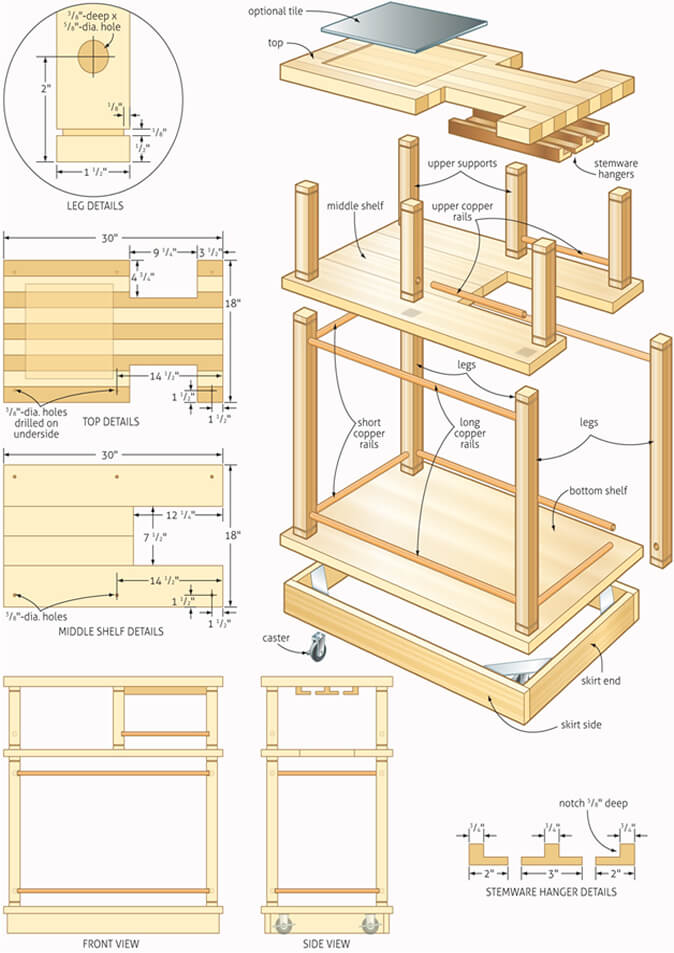Caulk is a goopy, smelly substance that you have to use when tiling the shower or tub. It’s messy and hard to get right.
There has got to be an easier way. Well, there is – painter’s caulk. Painter’s caulk is a latex-based product that comes in tubes and sprays on with no mess or fuss. It doesn’t smell bad and it dries clear so it blends seamlessly into your tile work.
If you’re going to tile your bathroom, definitely buy some painter’s caulk for the job because it makes everything so much easier.
What Is Painter’s Caulk?
Painter’s caulk is a siliconized acrylic latex caulking compound that is used for interior projects and repairs. It is often used when tiling because it will dry clear, making it nearly seamless with the surrounding tile. It can be applied with ease and allows you to control how much comes out of the tube or can. Once it has been cured, which doesn’t take long at all, it will work great as a sealant for your bathroom or kitchen tiles.
How To Use Painter’s Caulk
1. Clean off old caulking or gunk before applying new stuff
2. Apply a thin bead of the painter’s caulk along the crack or joint you’d like to seal
3. Smooth out bead with finger or tool
4. Let dry for several hours or overnight and you should have a nice smooth new tile-looking finish.
What Is Painter’s Caulk Used For?
Painter’s caulk is one of the most versatile products in your home improvement arsenal. I mean, come on, it can be used to seal up cracks between tiles, seams in brickwork, small gaps around windows and doors, and lots more. It also acts as an insulator where there are heat transfer issues (like kitchens or bathrooms) It also makes a great filler for holes drilled into walls from hanging pictures, mirrors and stuff like that. You can even use it to cover screw holes when hanging things on your walls as well.
When Is Painter’s Caulk A Bad Idea?
Painter’s caulk is a great product to use for the majority of your interior home projects. However, there are some scenarios where it might not be the best choice. For example, if you’re going to be working outside in extreme cold weather or extremely high temperatures then this could cause problems with the drying time and functionality of the caulking material. I’d recommend using an exterior grade asphalt-based caulking compound for those types of jobs because that type of caulk can handle fluctuating temperatures a little better than regular painter’s caulk can.
Painter’s Caulk vs Regular Caulking
The main difference between regular caulking and painter’s caulk is that the regular kind can be messy to apply, but it takes a long time for it to dry completely. As you probably know, if something needs to be painted soon after application of caulk or any other type of sealant, then you’ll want to use the silicone-based product because it won’t adhere permanently to whatever material you’re sealing in order to prevent paint from sticking. That usually more work down the road when you have to paint your walls or something like that.
You can get away with using regular caulking in most areas, but if you’re tiling your bathroom or kitchen then you’ll definitely want to use the latex-based product because it dries much faster and won’t affect whatever paint color you intend on using after tiling is complete.
Painter’s caulk is a great option for anyone looking for an easier way to get the job done when tiling their bathtubs, shower stalls, or even their bathrooms and kitchens. Once applied correctly, it will create a seamless look where two different surfaces meet up perfectly – without having to worry about anything getting stuck behind them and ruining your hard work once it’s time to paint.
Painter’s Caulk vs Silicone Caulking
Silicone caulk is a great sealant to use when you’re working outside where the temperatures will fluctuate dramatically. The only downside to using silicone over regular latex caulking is that it can be a total pain in the butt if you need to paint something soon after applying. If your project involves tiling, then don’t even waste your time with silicone. You’ll want to stick with the latex-based stuff there because painted silicone takes much longer to cure and apply than latex or acrylic products do. Silicone caulk isn’t terrible – it just costs more money than other types of caulking materials.
Painter’s Caulk vs Putty
Painter’s caulk is similar to putty materials in that they both have a soft, malleable consistency. The main difference between the two is that paint-style caulking doesn’t dry out and it isn’t quite as messy to work with as putty products can be. Another advantage of using painter’s caulk over putty compounds is that you don’t have to wait for it to dry before painting or even application other coatings like shellac or lacquer over top of it – which makes this material sometimes preferable than traditional linseed oil base type products.
Painter’s Caulk vs Rubber Cement
Rubber cement is a great product to use as an adhesive, but it shouldn’t be used as a sealant because it dries up and falls apart quickly. If you need something that can stick well to different surfaces and remain flexible so that you don’t have to worry about cracks or anything else tearing through your caulk later on down the line, then you should definitely stick with painter’s caulking instead of rubber cement.
Painter’s Caulk vs Asphalt Calking
Most people only end up working with either silicone or latex products throughout their entire lives, but there are actually many different types of caulking compounds out there on the market today. Some examples of those other kinds include asphalt-based materials. Asphalt is incredibly resilient, yet it’s also very expensive and difficult to work with – which makes asphalt calking ideal for use in extreme weather conditions. It’s an excellent compound to use around the base of heavy machinery where toughness and flexibility are a must. If you need something strong that can stand up to high temperatures and hot surfaces then asphalt caulk would be your best bet – not painter’s caulk.
Painter’s Caulk vs Spray Foam
Nowadays, there are many types of spray foam sealants available for purchase. The main difference between all the different varieties is that some dry quickly and others take a long time to cure – which makes using them as caulk compounds somewhat limited since you can’t always go around tiling shortly after applying them. For people who want something fast-drying that can be used on top of other layers like paint, putty or even caulk itself then they should consider using a spray foam substance as opposed to painter’s caulking compound.
Painter’s Caulk vs Patching Compound
Patching compound works great when you need to fill in larger gaps with something flexible like spackle or plaster without having to worry about cracks or other issues later on down the line. If you just need to fill in a hole and don’t care about flexibility then there’s no reason to use caulk instead of some sort of patching compound.
Where To Buy Painter’s Caulk
Painter’s caulk has become very popular throughout home improvement stores and specialty all across the country these days.
Professional level caulking guns are either disposable or can be reloaded after you’re done with them. For light jobs, this type of gun will get the job done just fine and save a few bucks in the process too.
You can also purchase handheld trigger-style caulk guns that mimic those used by professionals for years but come at a little bit higher price than plastic types do. If all else fails, you could always buy them online from Amazon or eBay – which is typically your best bet when it comes to getting the real deal product without having to pay too much money to the big box stores like Home Depot, and Lowes.
How Much Does Caulk Cost?
Depending on the kind of caulk you purchase, it might cost anywhere from $3 to $15 per bottle. The cost of caulking these days can vary pretty widely depending on what you’re buying, where you’re buying it from, and even what brand name the product is. You shouldn’t have to pay a whole lot more than twenty dollars for most standard-sized tubes of caulk from your local hardware store. However, if you need something super heavy duty then your best bet would be to go with the pro-level materials that professionals use – which can end up costing hundreds of dollars for just one tube or cartridge size worth instead.
What If The Caulk Doesn’t Adhere?
All you need to do is wait for about 48 hours before trying to use the caulk again. The more time passes, the stronger the adhesive properties will become and the less likely it will be that your caulk will come sliding off or breaking free.
What If There Is A Smell?
If your new caulking compound contains a high level of volatile organic compounds (VOCs) then there could very well be some bad smells coming from your DIY projects. These compounds can give off extremely unpleasant odors when first applied – which should only dissipate after a little air exposure has passed. You might want to put your project in an area without any airflow until all signs of smell are completely gone – and then you can move it to the location you actually want to use it in.
What Temperature Is Good For Caulk?
Caulk works great in an environment that is between 40 and 100 degrees Fahrenheit, where humidity levels are low and your caulk can dry properly. It should not be used if preparation surfaces are below freezing or exposed to water for more than 24 hours beforehand
What Is The Life Of Caulk?
Over time, caulking will begin to deteriorate when it’s continuously exposed to extreme weather elements like intense sunlight or heat. If you take the extra time to make sure that each application is adequately sealed, then this shouldn’t be an issue for most people.
How Long Does It Take To Dry?
Once you apply caulk to any given area, it should be ready to use in just 10 to 15 minutes. It will typically take between 30 and 90 days before the compound reaches its maximum strength
Do I Need To Use A Primer?
If your surfaces are really rough or porous then it might be a good idea for you to use a primer on them first. You don’t have to worry about doing this if your walls, floors, and other areas are smooth enough
When Does Painter’s Caulk Need Replacement?
Unfortunately, painter’s caulk doesn’t last forever. I’m sure there are some products out there that claim they can last forever, but we all know better than to believe those ads. It really depends on the type of caulk you use and how much exposure it has to water over time. You should inspect your caulking carefully every couple of months or so in order to determine if it’s needing replacement or not. Caulk is cheap; don’t be afraid to replace it every few decades just for peace of mind.
Caulking gaps around doors and windows is a great way to cut down on drafts in the wintertime. Replacing old caulk with fresh caulking is also an inexpensive way to freshen up the look of your home – especially if you’re painting at the time. Painters caulk is just one of the hundreds of options when it comes to sealants and adhesives. Shop around and see what you can find before you make a decision about which type of product will work best for your particular need.

